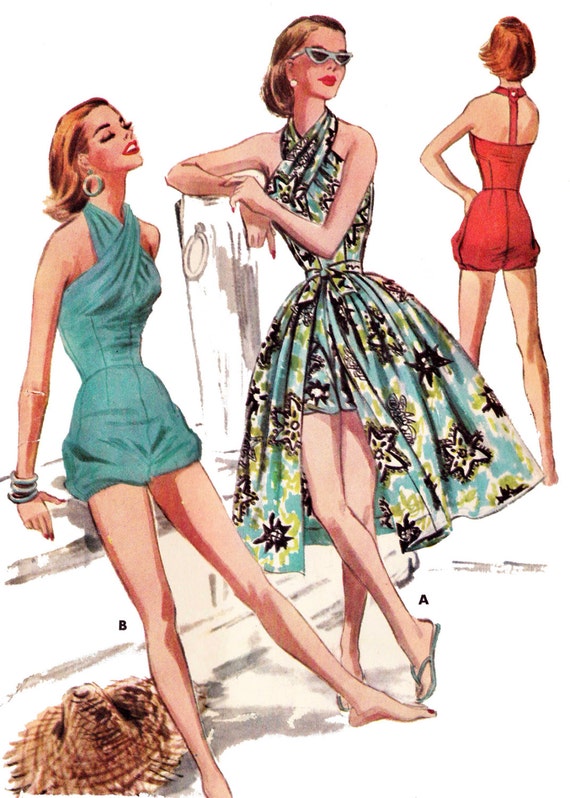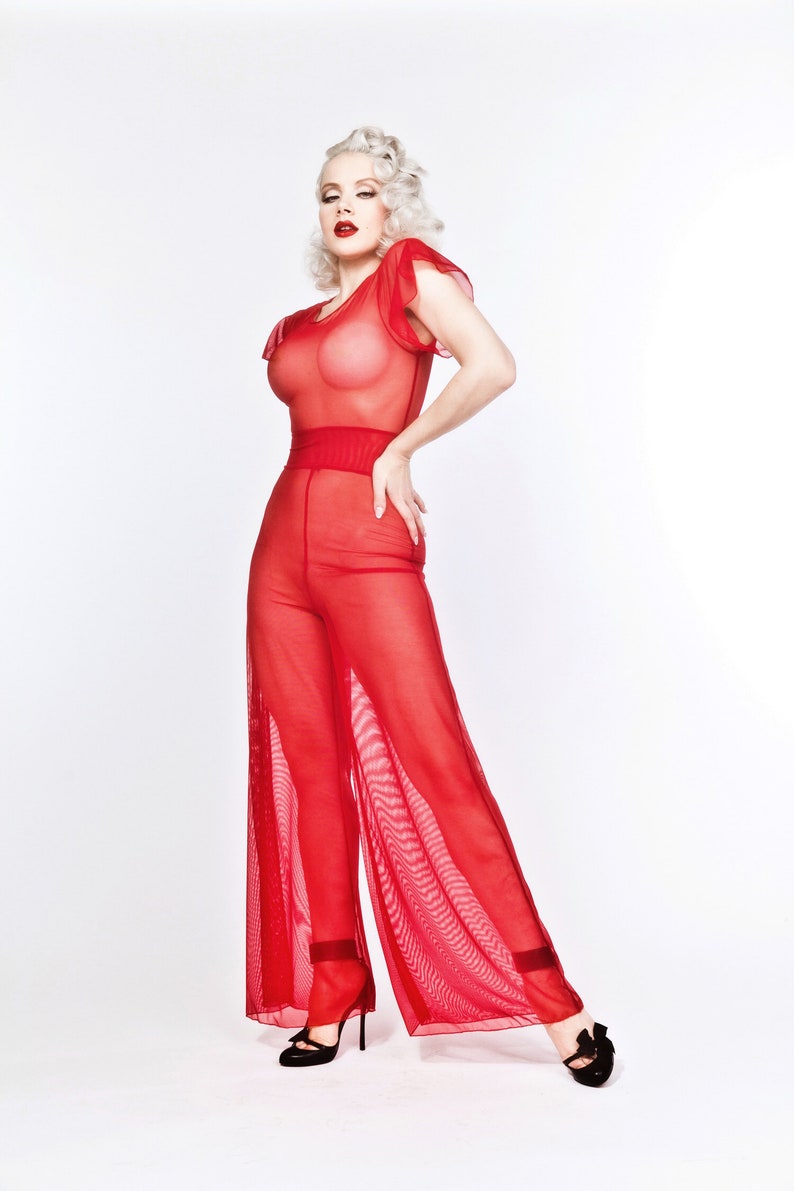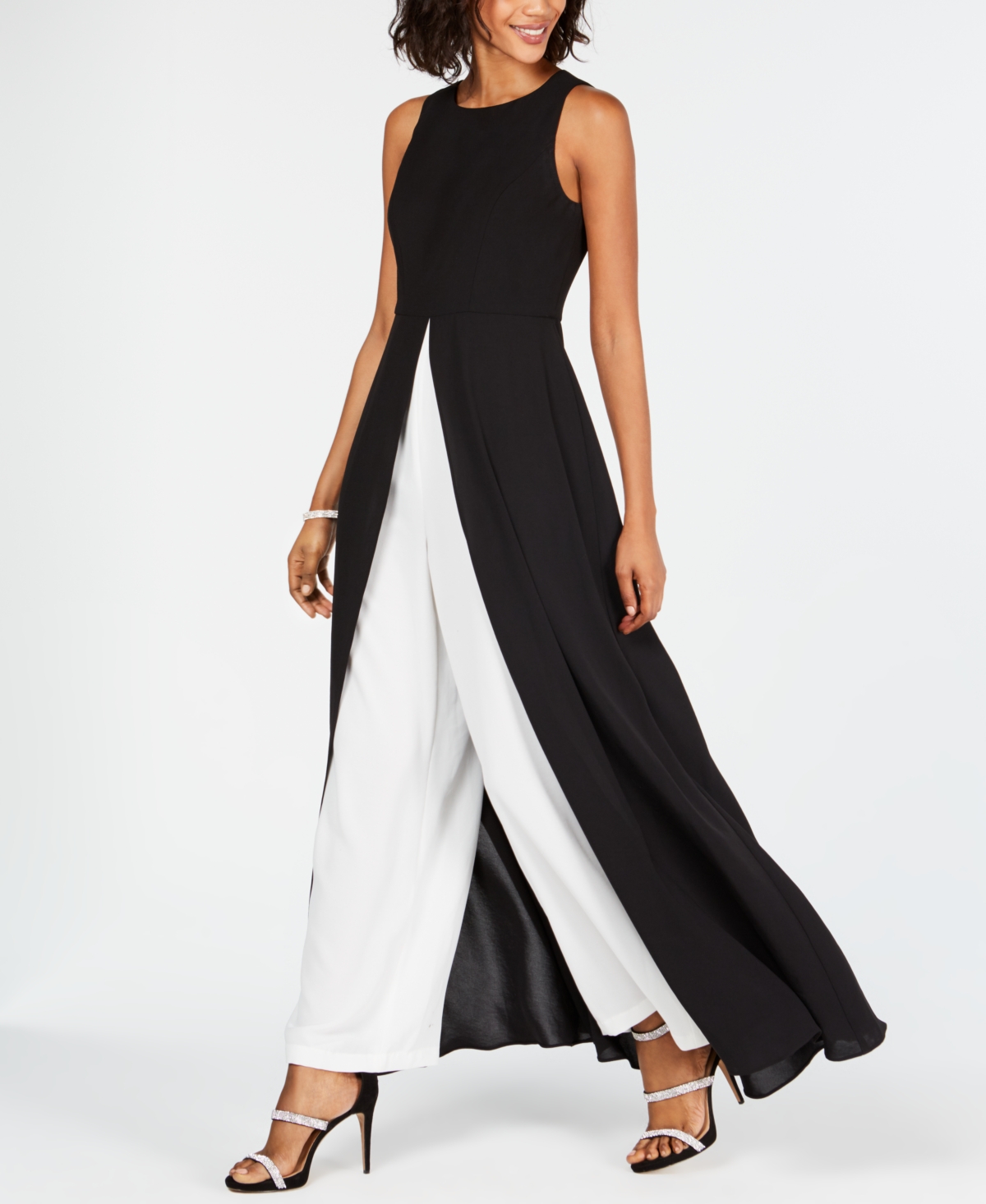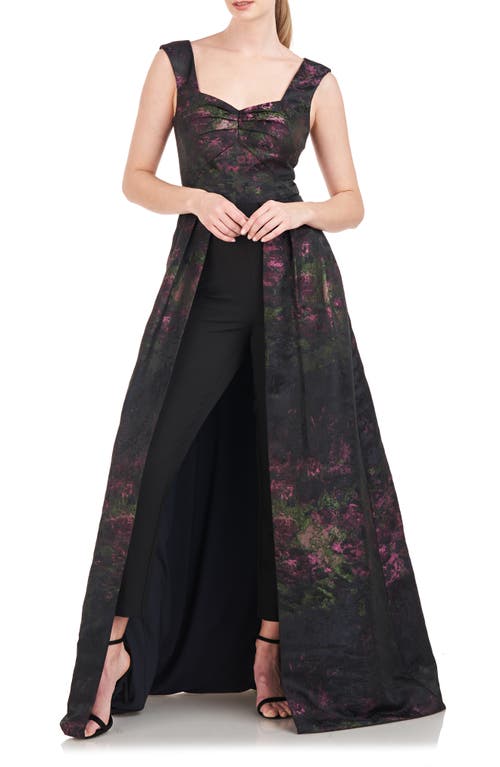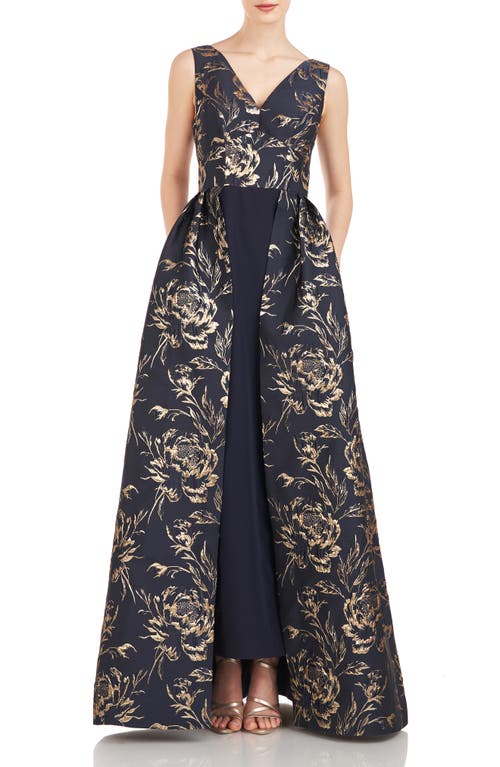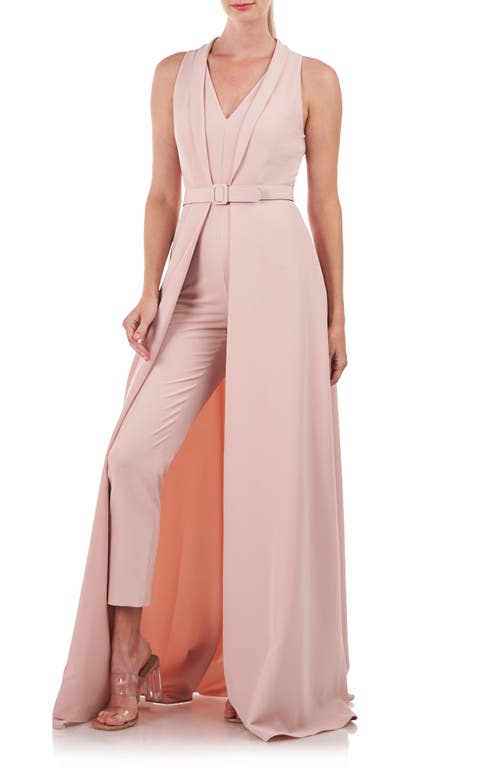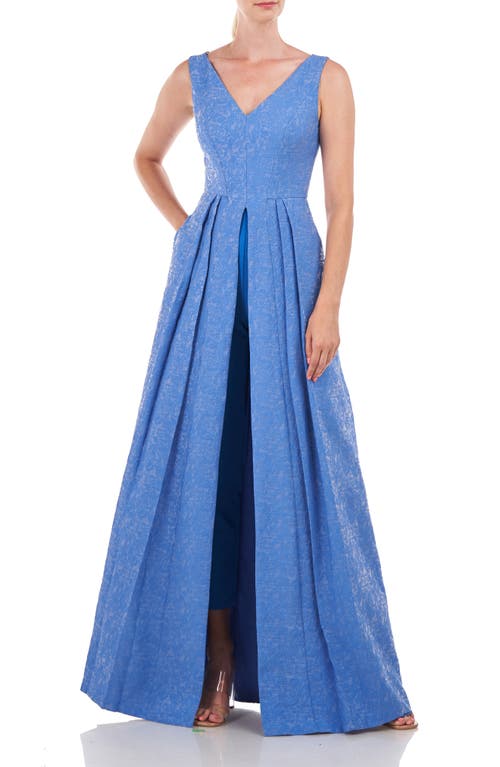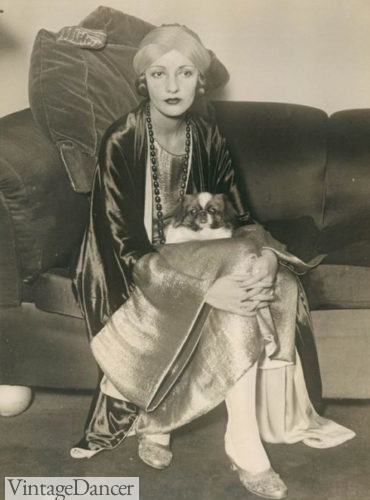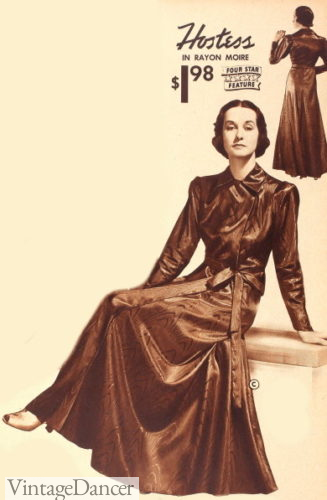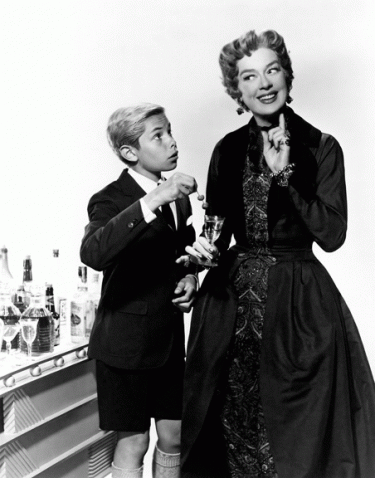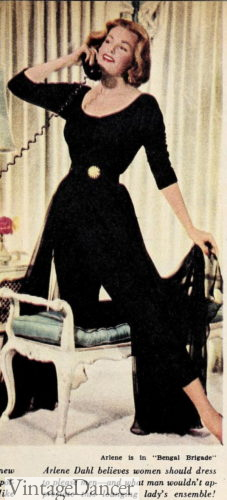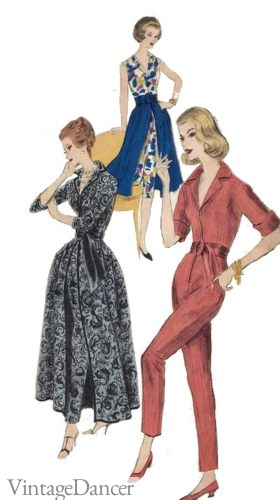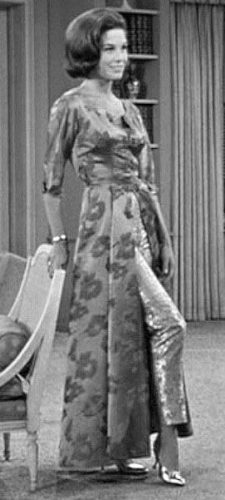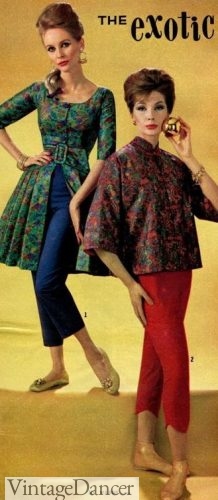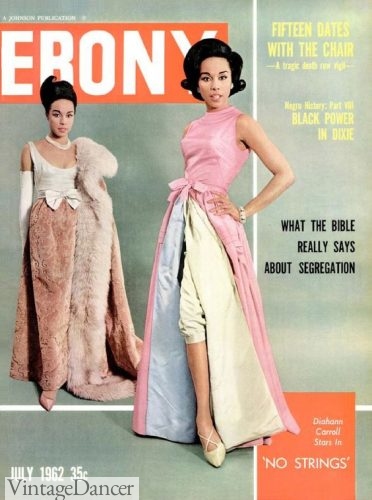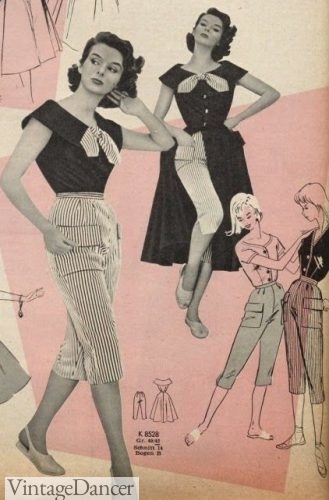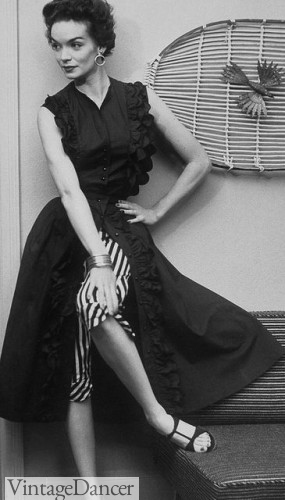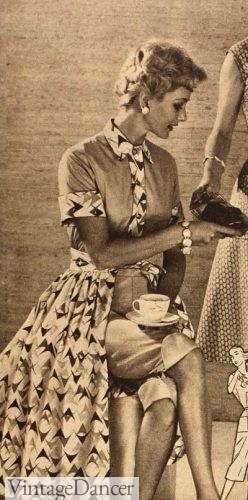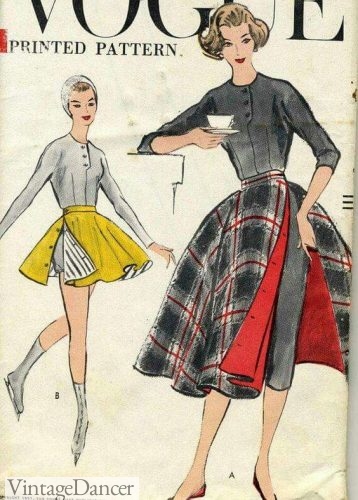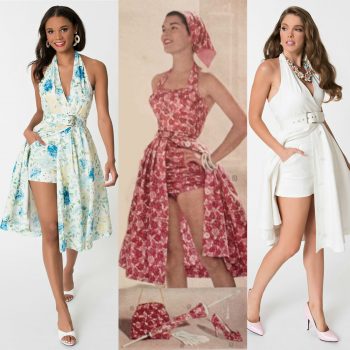Question: I have a friend who is getting married and looking for a specific style for her wedding dress. She wants a split skirt with capris underneath like something Lucy wore. We weren’t even sure that look had a name to know what to search for! Can you point us in a direction?
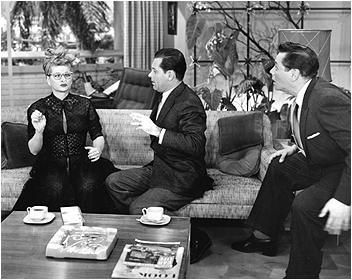
I Love Lucy, Lucille Ball, wearing her famous hostess outfit
Answer: That would be a 1950s hostess gown ensemble. Previously, hostess gowns / hostess dresses were worn from the 1920s onward for entertaining at-home informal parties. The gowns were very long with loose flowing material that looked like a cross between pajamas, a robe, and a dress. They were inspired by Asian fashion.
The idea for a vintage hostess dress with pants came about in the late 1950s (although there were some earlier robe over lounge pant outfits.) In the 196os they took off and entered formalwear for evenings outside of the home. Women in the 1970s also worn hostess dresses with jumpsuits in light sheer overlay fabrics.
Jump to read the history of hostess.
Shop Hostess Gowns and Dresses
Hostess dresses / playsuit skirts / sewing pattern options…
Hostess Dress History
Early hostess dresses were robe like with large kimono or batwing sleeves worn over pajamas or long nightgown. They were designed for lounging around the house, entraining only family and house guests. They were a Hollywood fad that few ordinary women could afford.
In the 1930s the hostess dress idea became something applied to house robes, house dresses, pajamas, and eveningwear. It was a buzz word that lost clear definition. “Hostess” could mean anything elegant for at home lounging.
- 1920s hostess ensemble with kimono sleeve robe
- 1937 hostess dress (house robe)
In the 1940s hostess gown were formal dresses worn in the evening regardless of location. In the late 1940s some dress designers were making lace duster jackets over dresses (midi or long) for day and evening wear.
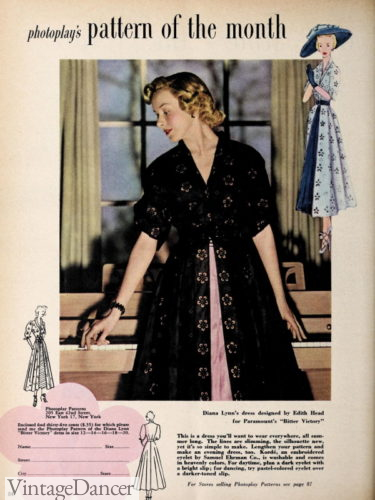
1949 lace overlay over a dress
In the 1950s, however, “modern women” took the dress and combined it with a pair of tan capri pants. Lucille Ball is credited with making this style very popular. She often hosted house parties in I Love Lucy and wore a large black lace robe over a pair of tan pants or jumpsuit.
- 1950s hostess dress over a jumpsuit
- 1955 lace duster hostess pant set
- 1959 hostess gowns and jumpsuit
- 1960 Mary Tayler Moore wears a hostess outfit
Here is what a few fashion advice books said about wearing a 50s/60s hostess gown:
“A Hostess who is entertainment in her own formal home may wear a hostess gown which may be fragile with floating chiffon or lace, or regal with sweeping velvet, or exotic with unusual dramatic color combinations. The skirt is usually trailing, the sleeves long and flowing, the neckline moderately low in front. The hostess gown allows one to indulge in whimsical designs and gives the career woman a chance to be utterly feminine. It is a type of one which can only be worn in your own home and should see to fuel with the mood of the house and the wearer. In apartments or homes of modern design, the hostess gown may feature a trouser effect with a jacket.” – Clothes for You, by Mildred Graves Ryan
- 1960 short hostess dress over capri pants
- Diahann-Carroll wears a 1962 hostess gown by Richard-Rogers on the cover of Ebony magazine
“A floating hostess gown, to be tripped over in a tiny apartment, becomes exciting and glamorous when draped about someone who is regally descending a winding stairs. “- Clothes for You, by Mildred Graves Ryan
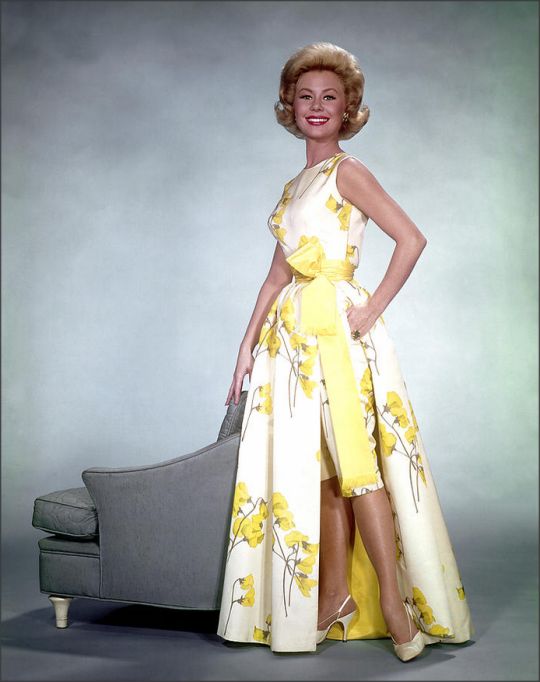
Tropical hostess gown and culottes shorts
“For informal at-home gowns which express friendliness, decorativeness, and originality, one may wear vivid color contrasts, exotic prints, fragile lace, rich textures such as velvets, satins, taffetas, perhaps with cover-up decolletages in the less formal style suggested by modern homes with the servant less hostess in plain view in her kitchen, long flowing culottes or slacks or tighter trousers, partly covered by matching or contrasting soft robes or jackets.” –The Arts of Costume and Personal Appearance, by Grace Margaret Morton
After researching hostess dresses and pant ensembles, I really want one too! I have half a mind to just cut open one of my 1950s style party dresses and wear it over a pair of capris like this:
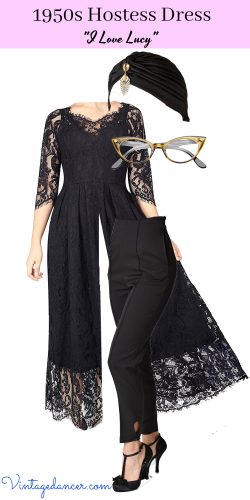
A 50s “I love Lucy” DIY outfit: black lace hostess dress (split open), capri pants, cat eye glasses, and a turban hat.
Into the 1960s, the hostess gown turned into a hostess pantsuit or jumpsuit in vivid tropical or ethnic prints. By the late 1960s, the idea of specific hostess clothing went by the wayside. Pretty much everyone was hosting house parties and there was no need to dress in anything but your best cocktail dress or suit.

1959 hostess pant set
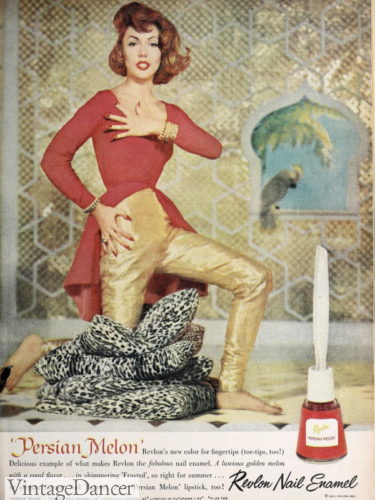
1957 gold cigarette pants topped with a short hostess peplum dress
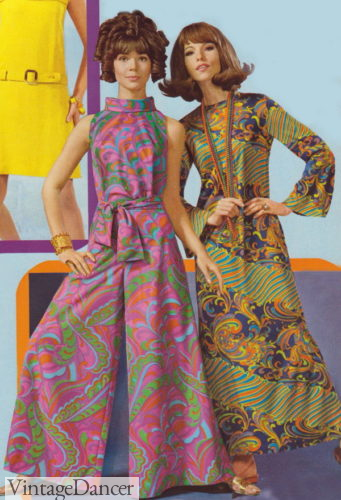
1968 trippy print jumpsuits and hostess dress
For a casual hostess dress, a matching button down skirt was worn over a playsuit / romper. It is a bit easier to find these styles today. Sometimes they are called maxi rompers. You could always pair a button-down skirt over capri pants or shorts and add a non-matching cute top for a fun summer look.
- 1955 casual hostess or patio dress outfits
- Hostess gown turned pants ensamble
- 1959 casual hostess or patio dress set
- 60s jumpsuit and reversible skirt
Unique Vintage is now carrying a few summer hostess gowns and playsuit skirt +rompers. Woo hoo!
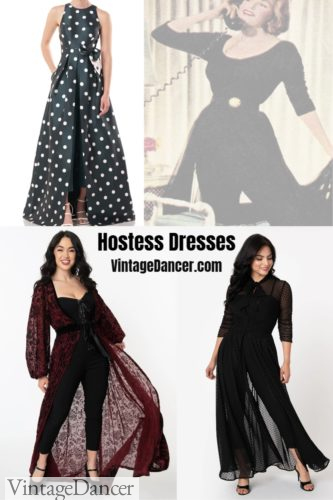
Hostess dresses (Share this)
Debbie Sessions has been teaching fashion history and helping people dress for vintage themed events since 2009. She has turned a hobby into VintageDancer.com with hundreds of well researched articles and hand picked links to vintage inspired clothing online. She aims to make dressing accurately (or not) an affordable option for all. Oh, and she dances too.
